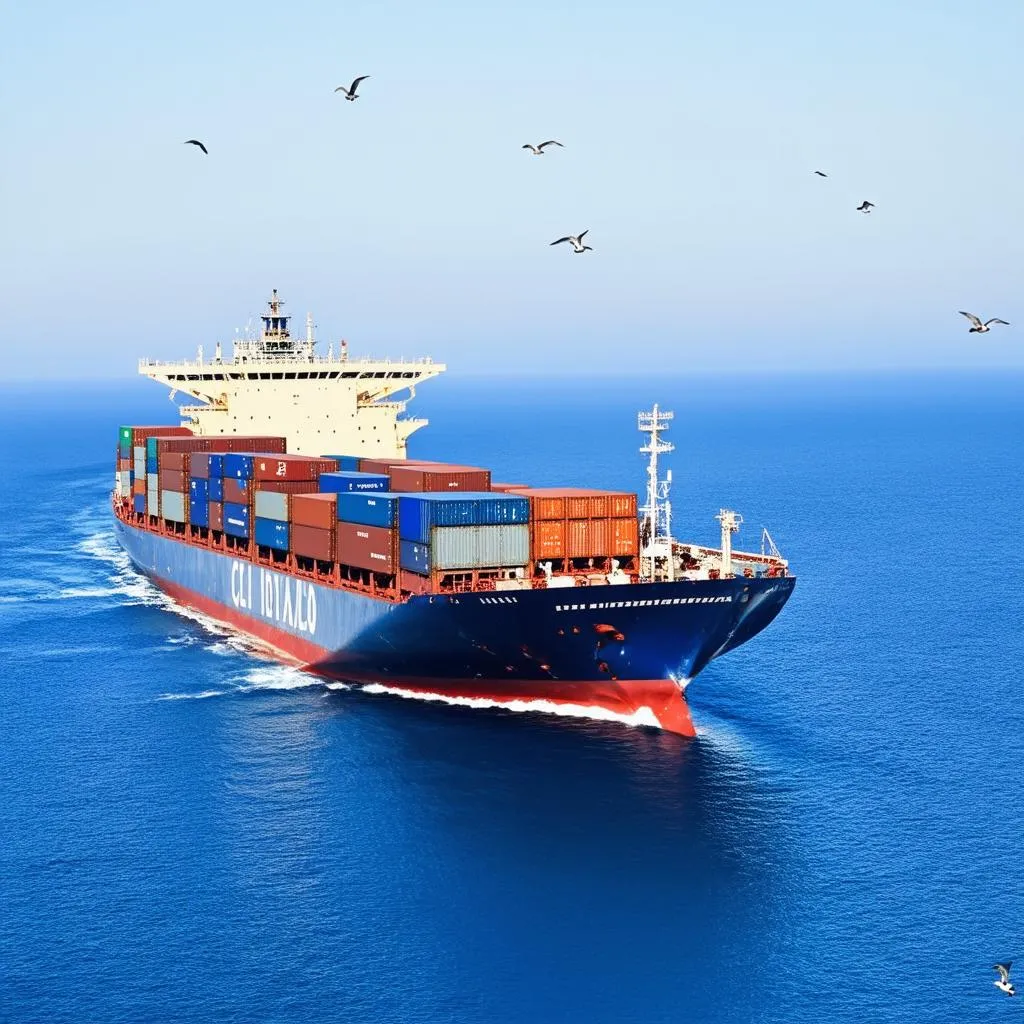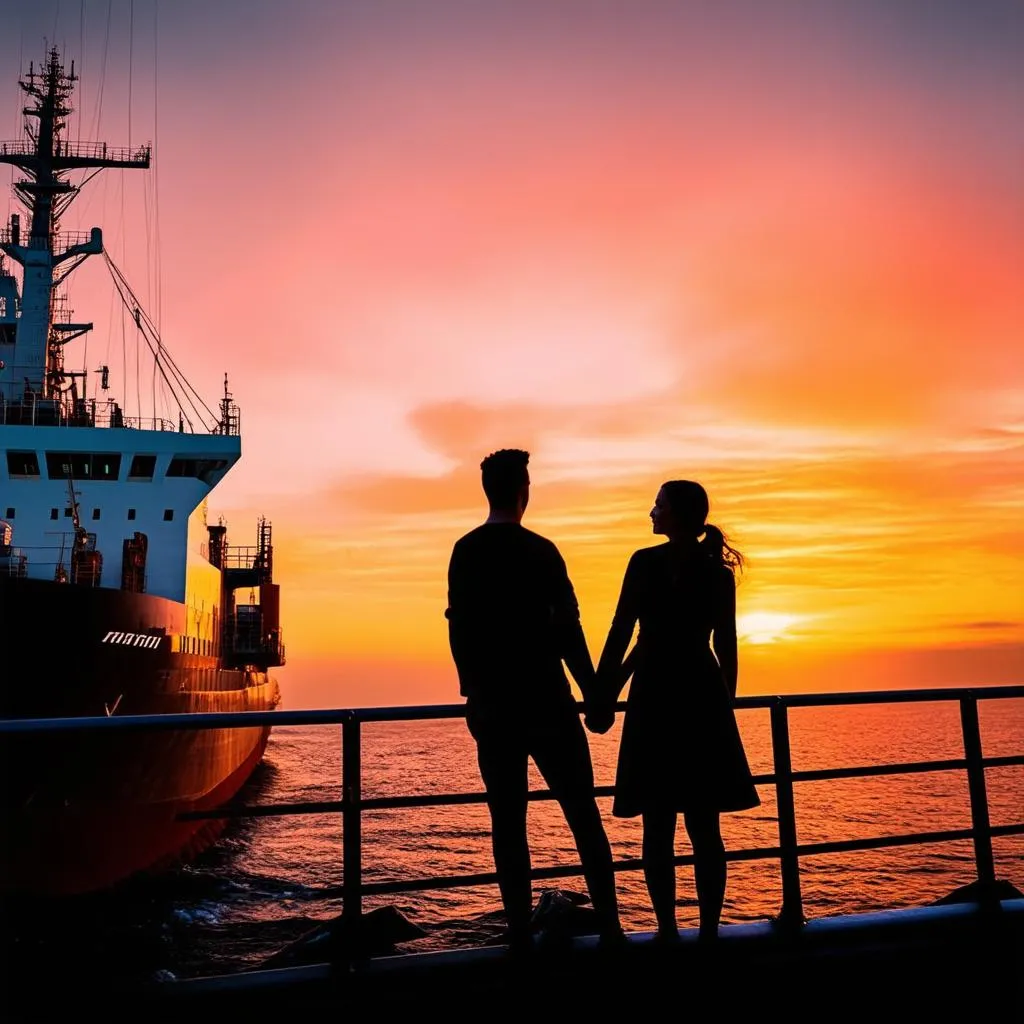Ever stood on a beach, watching a massive freighter ship slowly glide across the horizon and wondered, “Just how fast IS that thing going?” You’re not alone! The speed of these behemoths of the sea is a question that piques many a curious mind. Today, we’re diving into the world of freighter travel, exploring not just their speed, but the allure of a journey unlike any other.
The Need for Speed (or Lack Thereof)
While we envision ships slicing through waves at breakneck speeds, the reality of freighter travel is a bit more… leisurely. The average speed of a freighter ship, also known as a cargo ship, falls between 10 to 20 knots.
Let’s break that down:
- Knots? A knot is a unit of speed equal to one nautical mile per hour (approximately 1.15 statute miles per hour).
- 10-20 knots translates to roughly 11.5 to 23 mph. To put it in perspective, that’s about the speed of a bicycle rider on a leisurely countryside tour.
Why so slow? Several factors influence a freighter’s speed, including:
- Size and Cargo: These giants are built for capacity, not speed. The sheer weight of the cargo they carry naturally impacts how fast they can move.
- Fuel Efficiency: Sailing slower consumes significantly less fuel, a major consideration in the cost-conscious shipping industry.
- Environmental Factors: Ocean currents, weather conditions (think storms or rough seas), and even traffic congestion in busy shipping lanes can all impact a freighter’s speed.
A Different Kind of Journey
While freighter travel might not break any speed records, it offers a unique travel experience that’s gaining popularity. Imagine:
- Trading hectic airports for the tranquility of the open ocean.
- Swapping crowded tourist spots for star-filled night skies and endless horizons.
- Escaping the everyday rush and embracing a slower, more deliberate pace of life.
Intrigued? Websites like travelcar.edu.vn offer resources and insights into this alternative way to explore the world.
 Freighter Ship on Open Ocean
Freighter Ship on Open Ocean
Planning Your Freighter Adventure
Embarking on a freighter voyage requires some extra planning compared to your average vacation. Here’s a glimpse:
1. Research and Booking: Specialized travel agencies handle freighter bookings. Itineraries are often flexible, depending on cargo schedules and routes.
2. Flexibility is Key: Be prepared for potential delays or changes in itinerary due to unforeseen circumstances. Remember, cargo takes priority!
3. Packing Essentials: Pack for all types of weather, as conditions at sea can change quickly. Don’t forget essentials like seasickness medication, books, and activities to keep you entertained during those long, peaceful days at sea.
4. Embrace the Journey: Freighter travel is about embracing the slow lane, disconnecting from the digital world, and reconnecting with yourself and the rhythm of the ocean.
FAQs About Freighter Travel
Q: How much does it cost to travel on a freighter ship?
A: Costs vary depending on the route, cabin type, and length of the journey, but generally range from $100 to $200 per person, per day.
Q: Is it safe to travel on a freighter ship?
A: Freighter ships adhere to strict safety regulations. However, it’s essential to be aware of potential risks associated with being at sea and to follow all safety instructions provided by the crew.
Q: What is there to do on a freighter ship?
A: Days are often spent reading, relaxing on deck, observing marine life, and enjoying the company of fellow passengers and crew members. Some ships may offer amenities like a swimming pool or fitness center.
 Couple on Freighter Ship Watching Sunset
Couple on Freighter Ship Watching Sunset
Setting Sail on a Sea of Possibilities
While the speed of a freighter ship might not set your pulse racing, the journey itself offers a unique perspective on travel. It’s a chance to slow down, disconnect, and rediscover the beauty of a simpler, more connected way of experiencing the world. Who knows, you might just find that the slowest journeys lead to the most incredible destinations.